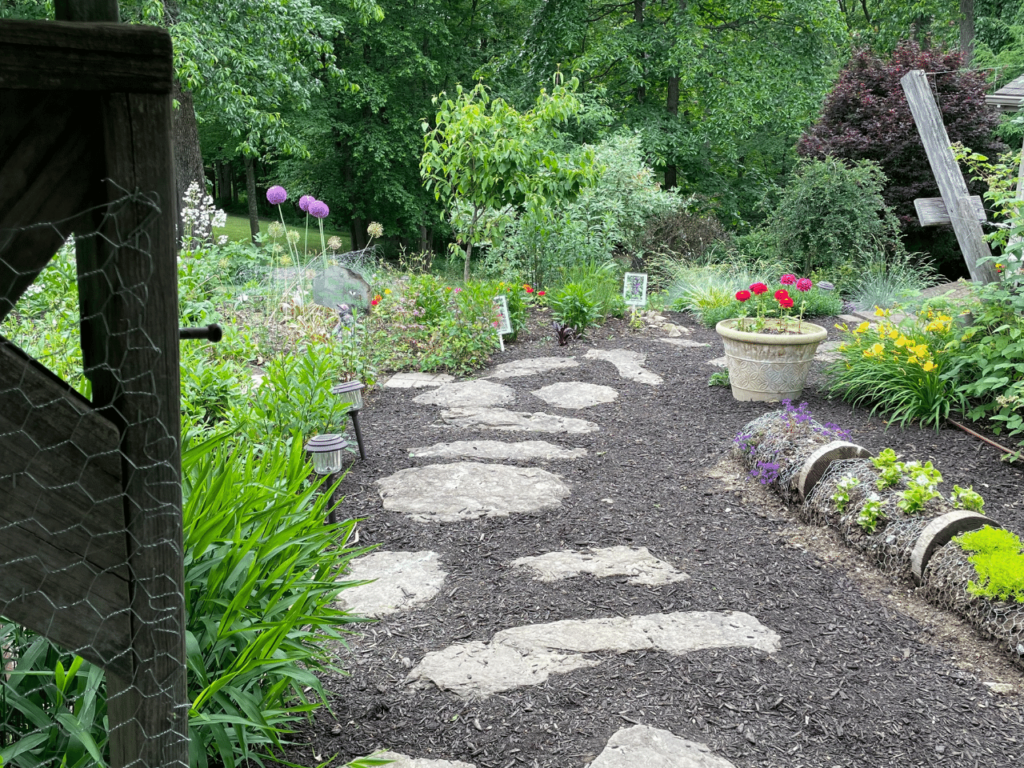Garden of Transitions
From birth to death, nature and life are forever evolving, transitioning us to the next part of our journey. The Garden of Transitions evolved from overgrown trees when the property was first purchased to an extension of Pap’s Garden with grapevines, and now a connection to The Garden of Faith.
Today stands a pollinator garden to promote the ecosystem and diversity of the insect world that is crucial to our agricultural crops, which in turn sustains us as humans. From spring to winter, the plants adapt to its everchanging environment, if you listen, it becomes the voice of your past to the voice of your future. “Bring me your peace and my wounds, they will heal.”
The garden now represents the transitions from a family home to the Iris Respite House Bed & Breakfast for caregivers to take an overnight break away. This garden is used for our Summer Pollinator Camps, where children learn about birds, butterflies, and bees, pollination, and the importance of caring for someone through the Take Two, Give One to a Family Caregiver concept. This garden is dedicated to Charles and Lisa Story’s grandchildren and was made possible by the entire Story Family, along with Hope Grows horticulturists and the students and staff of Bidwell Training Center.

Healing & Restorative Properties
There is a powerful symbol with transitions of plant life in this garden, very relatable to our own birth and death. Spirituality is heightened in this garden from engaging with the element of nature; the wind and stillness.
I am the voice in the fields when the summer’s gone.
The dance of the leaves when the autumn winds blow.
Ne’er do I sleep throughout all the cold winter long.
I am the force that in springtime will grow.
Suggested Therapeutic Activity
Sit! Be Still! Be marveled by the beauty of the ever-changing ecosystem. The pollinators; the birds, butterflies and the bees that continue to support our critical need for biodiversity and food security are fascinating to watch. Consider the seasons of change as it relates to the calendar and listen for the internal voice. The fields in the summer, the leaves of the autumn, the dormancy of winter and the force of growth in the spring.
Volunteer Schedule
The garden effort on a yearly basis is approximately 3-5 hours every week during the spring and into the late fall season. Once every 2 weeks, for about 1-2 hours is an appropriate time frame for support.
Seasonal Maintenance Description
From spring to winter, this garden requires ongoing maintenance of weeding, hoeing, compost application, planting, cutting, deer and pest application and keeping up with the change of seasonal growth.
Adopt the Garden
Cost: $2,500 yearly
Signage with name/company name will be in placed in the garden for one year.












